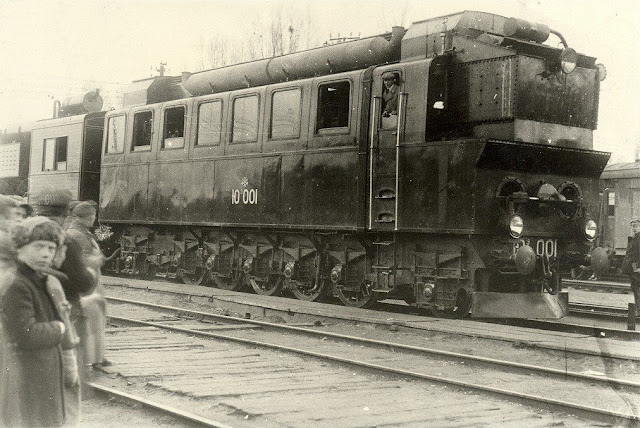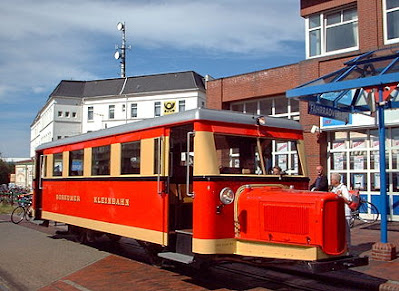DIESEL LOCOMOTIVE
As we have written before in many of our blogs, the theory of human life is that it tends to be more inclined towards modernity and this theory is not limited to certain areas of life.
On the contrary, its effects are evident in many areas of life. Perhaps this is why, shortly after any new invention, the invention is given a modern form, faster than ever, and the best in structure, and so on. We see modern things in our daily lives
So, sir, we come to the part where we talk about the middle ground, Trains developed in the early days needed steam power, which was gradually traversed by innovative tracks to make them calmer and better at speed.
Sir, we will talk about such an innovation today and it would not be wrong to say here that this innovation started after the invention of the diesel engine by the German inventor Rudolf Diesel, These engines are also technically called Internal combustion engines.
 |
| RUDOLF DIESEL |
Rudolf used his early diesel engines on ordinary vehicles, but failed due to the excess weight and speed reduction of these engines later, in 1893, Rudolf began the work of moving these engines on trains, and soon achieved significant success in his invention by making significant changes to these trains.
In 1906, Rudolf Diesel, Adolf Klose, and the Sulzer brothers, who built diesel engines, formed a company to build diesel-powered trains.
 |
WORLD FIRST DIESEL LOCOMOTIVE |
The company received its first order from the Prussian railway station in 1909, and the world's first diesel-powered train was built in 1912. The train was relocated to Berlin, Germany in September of that year after a series of test trips.
Meanwhile, in 1911, Adolphus Busch, from the United States, acquired the rights to manufacture diesel engines in 1898 and founded a company called Busch Sulzer, but Busch did not use these engines in ordinary vehicles Instead, they were limited to building trains, By 1920, many prototype engines had been developed in different parts of the world.
The manufacture of diesel-powered shunters began in France in 1920. After a few successful trials, the manufacture of these shunters began in Denmark, Netherland, the United States and Germany, and soon thousands of such shunter units were made.
DIESEL SHUNTER |
(Here, in order to increase the knowledge of our esteemed readers, let us say that shunters or switcher engines are used to pull train engines from one track to another or to remove repairable engines from tracks)
Due to a shortage of petroleum products during World War I, the world's first diesel-electric train was built in 1914 by the German-owned Wagon Fabric Company on the orders of the Royal Saxon Railway Station.
 |
WORLD FIRST DIESEL-ELECTRIC LOCOMOTIVE |
The train was later sold in 1922 to the Travers Buttes Railway Line in Switzerland, where it was used on a daily basis until 1944 and later until 1965 used as a booster.
In 1922, a diesel-electric train was developed in Italy, Later, in 1924, two diesel-electric trains were built for the Soviet Union. One of the trains began its work on October 22 this year. The train was designed by Russian engineer Yuri Lomonosov and the train was built by the German company Maschinenfabrik Esslingen during the one-year period from 1923 to 1924 and the train was in use during the thirty-year period from 1924 to 1954.
 |
YURY LOMONOSOV DIESEL-ELECTRIC LOCOMOTIVE |
And the second train started operating a month apart on November 9 this year. The train was built by Russian engineer Yakov Modestovich Gakkel and built at the Baltic shipyard in St. Petersburg, Russia The train was in use for three years from 1924 to 1927. Later, due to some technical glitches, the train was completely discontinued in 1934.
 |
YAKOV MODESTVICH GAKKEL LOCOMOTIVE |
In the 1930's, a number of European manufacturers introduced high-speed train cars to the world, most notably the William Beardmore Company. Later, these train cars were developed in various countries around the world, including the Hungarian BC Mott, The Wismar railbus used in Germany, the Renault VH used in France and the Littorina used in Italy are considered the best trains.
 |
| HUNGARIAN BC MOTT |
 |
| WISMER RAILBUS |
 |
| LITTORINA |
Rudolf's invention of the diesel engine enriched Richard's train invention, giving passengers a more comfortable high-speed journey than ever before.
Well, the journey of these travellers ends at one station or another, but the journey of modernization by inventing Rudolf and Richard continues today, Because man is innovative by nature.
Thanks for joining the blog - Syed Murtaza Hassan











0 Comments